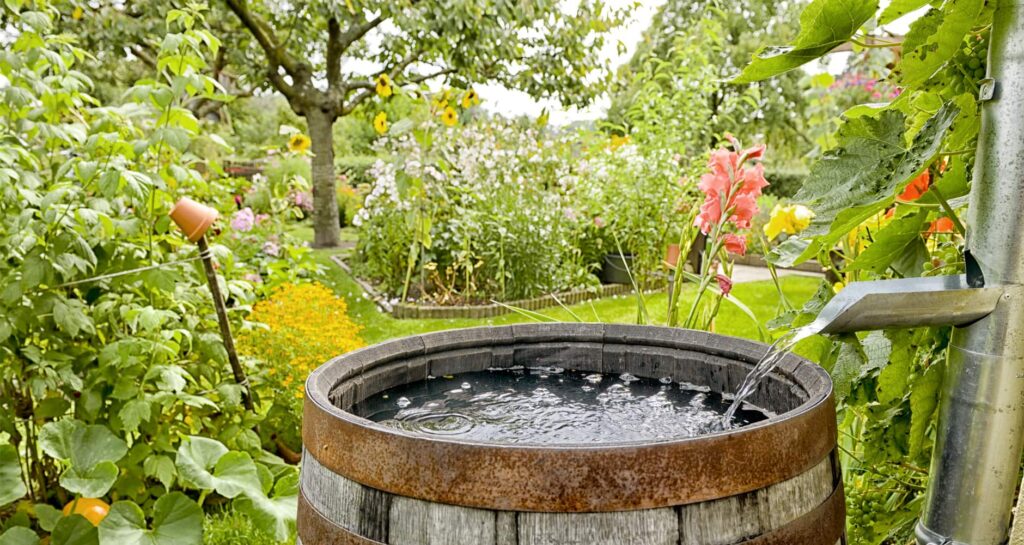
Harnessing the Rain: A Comprehensive Guide to Sustainable Water Collection Systems
Water, the lifeblood of our planet, is becoming an increasingly precious resource. With climate change intensifying, populations growing, and demand for water soaring, the need for sustainable water management practices is more critical than ever. One of the most promising solutions lies in embracing sustainable water collection systems. This comprehensive guide delves into the world of rainwater harvesting, exploring its benefits, various system types, implementation strategies, and future prospects.
The Urgency of Sustainable Water Management
Before we dive into the specifics of rainwater harvesting, let’s acknowledge the pressing need for sustainable water management. Traditional water sources, such as rivers, lakes, and groundwater, are under immense pressure. Over-extraction, pollution, and climate change are depleting these resources at an alarming rate. This scarcity can lead to conflicts, economic instability, and environmental degradation. Therefore, exploring alternative water sources and adopting responsible water usage practices are paramount.
The consequences of inaction are dire. Water scarcity can lead to:
- Health Issues: Lack of access to clean water increases the risk of waterborne diseases.
- Food Security Concerns: Reduced water availability impacts agricultural productivity, threatening food supplies.
- Economic Disruption: Water scarcity can hinder industrial activities and economic growth.
- Social Unrest: Competition for dwindling water resources can trigger social tensions and conflicts.
- Environmental Damage: Over-extraction of water can devastate ecosystems and biodiversity.
Sustainable water collection systems offer a viable solution by providing a supplementary water source, reducing reliance on conventional sources, and promoting water conservation.
What are Sustainable Water Collection Systems?
Sustainable water collection systems, at their core, are designed to capture, store, and utilize water from renewable sources in an environmentally responsible manner. These systems often focus on rainwater harvesting, but can also include other strategies like fog harvesting or condensation collection. The primary goal is to reduce the demand on existing water supplies, conserve water resources, and minimize environmental impact.
The defining characteristics of these systems include:
- Sustainability: Designed to operate with minimal environmental impact, considering factors like energy consumption and waste generation.
- Renewable Resource Utilization: Primarily rely on naturally occurring water sources, such as rainfall or fog.
- Water Conservation: Promote efficient water usage and minimize water waste.
- Local Adaptation: Tailored to local climate conditions, water availability, and user needs.
- Long-Term Viability: Built for durability and designed to provide a reliable water supply over an extended period.
Benefits of Rainwater Harvesting
Rainwater harvesting, a cornerstone of sustainable water collection, offers a multitude of benefits for both individuals and the environment. Let’s explore some of the key advantages:
Environmental Advantages
- Reduced Strain on Water Resources: Rainwater harvesting decreases the demand on municipal water supplies, helping to conserve groundwater and surface water sources.
- Reduced Runoff and Erosion: By capturing rainwater, these systems help to reduce stormwater runoff, which can cause erosion, flooding, and pollution of waterways.
- Groundwater Recharge: Some rainwater harvesting systems allow for groundwater recharge, replenishing aquifers and supporting local ecosystems.
- Reduced Energy Consumption: Less reliance on municipal water means less energy is needed for water treatment and distribution, reducing carbon emissions.
- Improved Water Quality: Rainwater is generally free from chemicals and pollutants found in municipal water, making it suitable for various non-potable uses.
Economic Advantages
- Reduced Water Bills: Harvesting rainwater can significantly lower water bills, especially in areas with high water costs.
- Increased Property Value: Homes and buildings with rainwater harvesting systems can be more attractive to buyers, potentially increasing property value.
- Cost Savings on Landscaping: Rainwater can be used for irrigation, reducing the need to purchase water for gardening and landscaping.
- Potential for Government Incentives: Many governments offer rebates, tax credits, or other incentives to encourage rainwater harvesting.
- Long-Term Cost Savings: Once the system is installed, the ongoing operational costs are generally low.
Personal Advantages
- Water Independence: Rainwater harvesting provides a degree of independence from municipal water supplies, making you less vulnerable to water restrictions or disruptions.
- Access to Water During Emergencies: Rainwater storage tanks can provide a crucial water source during droughts, natural disasters, or other emergencies.
- Environmental Awareness: Implementing a rainwater harvesting system promotes environmental awareness and a more sustainable lifestyle.
- Improved Garden Health: Rainwater is naturally soft and free of chlorine, making it ideal for watering plants and improving their health.
- Empowerment: Taking control of your water supply can be empowering and give you a sense of responsibility towards the environment.
Types of Sustainable Water Collection Systems
Sustainable water collection systems come in various forms, each with its own set of advantages and suitability for different applications. The most common types include:
Rainwater Harvesting Systems
Rainwater harvesting systems are the most prevalent and versatile type of sustainable water collection system. They capture rainwater from rooftops or other surfaces and store it for later use. These systems can be broadly categorized into two main types:
- Above-Ground Systems: These systems collect rainwater and store it in tanks that are located above ground. They are relatively easy to install and maintain, making them a popular choice for residential applications. The tanks can be made of various materials, including plastic, concrete, or metal.
- Underground Systems: These systems store rainwater in underground tanks. They offer several advantages, including protection from sunlight, which can inhibit algae growth, and a smaller footprint on the property. However, they require more extensive installation and excavation.
Rainwater harvesting systems typically consist of the following components:
- Collection Surface: Usually a roof, but can also include other surfaces like patios or driveways.
- Gutters and Downspouts: Collect rainwater from the collection surface and direct it to the storage tank.
- First Flush Diverter: Diverts the initial runoff, which may contain debris and contaminants, away from the storage tank.
- Filtration System: Removes debris, leaves, and other contaminants from the water.
- Storage Tank: Stores the collected rainwater.
- Pumping System (Optional): If the storage tank is located below the point of use, a pump is needed to deliver the water.
- Distribution System: Delivers the harvested water to the desired end-uses.
Fog Harvesting Systems
In areas with frequent fog, fog harvesting systems can be a valuable source of water. These systems use large mesh nets to capture water droplets from fog. The collected water then drips down into a collection trough and is stored. Fog harvesting is particularly effective in coastal regions and mountainous areas where fog is abundant.
Condensation Collection Systems
Condensation collection systems capture water that forms on surfaces due to condensation. These systems can be simple, such as collecting condensation from air conditioning units, or more complex, such as those designed to capture atmospheric moisture. While not as common as rainwater harvesting, condensation collection can be a useful supplemental water source in certain environments.
Designing and Implementing a Rainwater Harvesting System
Designing and implementing a rainwater harvesting system requires careful planning and consideration of several factors. Here’s a step-by-step guide:
1. Assess Your Needs and Resources
- Water Demand: Determine your water needs for various uses, such as irrigation, toilet flushing, laundry, and non-potable uses.
- Rainfall Data: Research the average annual rainfall in your area and the seasonal distribution.
- Collection Surface Area: Measure the surface area of your roof or other collection surfaces.
- Available Space: Assess the available space for the storage tank and other system components.
- Budget: Determine your budget for the system, including installation costs and ongoing maintenance.
2. Choose the Right System Components
- Storage Tank Size: Calculate the optimal tank size based on your water demand, rainfall patterns, and collection surface area.
- Tank Material: Choose a tank material that is durable, UV-resistant, and suitable for storing potable or non-potable water (e.g., polyethylene, concrete, fiberglass).
- Filtration System: Select a filtration system that effectively removes debris, leaves, and other contaminants. Consider a combination of pre-filters, screen filters, and activated carbon filters.
- First Flush Diverter: Install a first flush diverter to divert the initial runoff, which may contain contaminants.
- Pumping System (If Needed): Choose a pump that is appropriate for the size of your system and the water pressure requirements.
- Distribution System: Design a distribution system that delivers the harvested water to the desired end-uses.
3. Installation and Maintenance
- Professional Installation: Consider hiring a qualified professional to install the system, especially for complex systems or if you are unsure about the installation process.
- Proper Installation: Ensure that all components are installed correctly and according to the manufacturer’s instructions.
- Regular Maintenance: Perform regular maintenance, including cleaning the gutters, filters, and storage tank. Inspect the system for leaks or damage.
- Water Quality Testing: If using the water for potable purposes, test the water quality regularly to ensure it meets safety standards.
Water Usage Considerations
The effective utilization of harvested rainwater hinges on understanding its appropriate applications and implementing water-saving practices. Here’s a breakdown of key considerations:
Suitable Uses
Rainwater is versatile, but its suitability depends on treatment and intended use. Here’s a guide:
- Non-Potable Uses: Rainwater is generally excellent for non-potable uses, including:
- Irrigation: Watering gardens, lawns, and landscaping.
- Toilet Flushing: Significantly reduces reliance on potable water.
- Laundry: Provides soft water, potentially reducing the need for detergents.
- Vehicle Washing: A great alternative to using municipal water for car washing.
- Outdoor Cleaning: Washing patios, decks, and other outdoor surfaces.
- Potable Uses (with proper treatment): With appropriate treatment, rainwater can be used for drinking and other potable purposes. This requires:
- Filtration: Removing sediment, debris, and other particulates.
- Disinfection: Disinfecting the water to kill bacteria, viruses, and other pathogens (e.g., UV disinfection, chlorination).
- Testing: Regular water quality testing to ensure the water meets safety standards.
Water-Saving Practices
Maximize the benefits of your rainwater harvesting system by adopting water-saving practices:
- Efficient Irrigation: Use drip irrigation, soaker hoses, or other efficient irrigation methods to minimize water waste.
- Water-Wise Landscaping: Choose drought-tolerant plants that require less watering.
- Low-Flow Fixtures: Install low-flow toilets, showerheads, and faucets to reduce water consumption.
- Fix Leaks Promptly: Regularly check for leaks in your plumbing system and repair them promptly.
- Educate Others: Share information about water conservation and rainwater harvesting with your family, friends, and neighbors.
Regulatory Considerations
Before installing a rainwater harvesting system, it’s essential to understand the local regulations and guidelines. These regulations vary by location and may cover aspects such as:
- Permitting Requirements: Some areas require permits for installing rainwater harvesting systems.
- Water Quality Standards: Regulations may specify water quality standards for rainwater used for potable purposes.
- Plumbing Codes: Local plumbing codes may dictate the type of materials and installation methods that can be used.
- Incentives and Rebates: Check for any government incentives or rebates available in your area to offset the cost of installation.
- Restrictions: Some areas may have restrictions on the use of rainwater harvesting systems, such as limitations on the type of roofing materials that can be used.
Consult with your local building department or water authority to determine the specific regulations that apply to your project.
The Future of Sustainable Water Collection
The future of sustainable water collection is bright, with ongoing advancements in technology and increasing awareness of the importance of water conservation. Several trends are shaping the future of this field:
- Smart Water Systems: Integration of smart technologies, such as sensors, data analytics, and automated controls, to optimize water collection, storage, and distribution.
- Advanced Filtration Technologies: Development of more efficient and cost-effective filtration systems to improve water quality.
- Decentralized Water Management: Increased emphasis on decentralized water management systems, such as rainwater harvesting, to reduce reliance on centralized water infrastructure.
- Community-Based Initiatives: Growing interest in community-based rainwater harvesting projects to promote water conservation and build community resilience.
- Climate Change Adaptation: Rainwater harvesting is increasingly recognized as a key strategy for adapting to the impacts of climate change, such as droughts and water scarcity.
- Innovative Materials: Research and development of new materials for storage tanks and other system components, such as lightweight and durable materials.
As technology advances and awareness grows, sustainable water collection systems will play an increasingly vital role in ensuring a secure and sustainable water future for all. By embracing these systems, we can reduce our environmental footprint, conserve precious water resources, and build more resilient communities.
Conclusion
Sustainable water collection systems are a crucial tool in the fight against water scarcity and environmental degradation. By understanding the benefits, types, and implementation strategies of these systems, we can take proactive steps towards a more sustainable future. Rainwater harvesting, in particular, offers a practical and cost-effective solution for reducing our reliance on conventional water sources, conserving water resources, and promoting environmental stewardship. Whether you are a homeowner, a business owner, or a community leader, embracing sustainable water collection practices is a step towards a more resilient and water-secure future. Let’s harness the power of the rain and build a world where water is managed responsibly and sustainably for generations to come.


